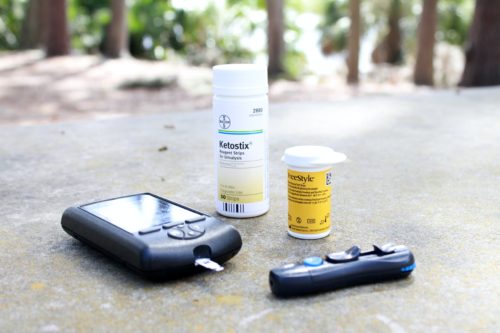Case Studies: Real-Life Scenarios of Resumption of Care Assessments in Home Health
The Resumption of Care (ROC) assessment is a crucial process in home health care, marking the point at which a patient who had been previously discharged from home health services resumes care after a period of either improvement or a break from services. The ROC assessment ensures that the patient’s current needs, progress, and goals are reassessed to provide the most appropriate care. Here, we explore real-life scenarios of ROC assessments in home health care through case studies, shedding light on the importance of this process in patient recovery, continuity of care, and enhanced health outcomes.
Case Study 1: Samantha’s Post-Surgical Recovery
Background:
Samantha, a 68-year-old woman, had been recovering from a knee replacement surgery. After a few weeks of intensive home care following her surgery, her physical therapy progress allowed her to discharge from the service. However, three months later, she experienced a fall at home, which caused additional trauma to her knee and slowed her recovery.
ROC Assessment:
Upon her return to home health services, a resumption of care assessment was conducted by a registered nurse (RN). During the assessment, the RN identified several issues:
- Physical Condition: Samantha had reduced mobility in her knee and was not able to perform basic activities of daily living (ADLs) independently.
- Pain Management: She reported significant knee pain that had escalated post-fall.
- Psychosocial Factors: Samantha felt anxious and was beginning to show signs of depression due to her limited mobility and increased pain, which could further impede her recovery.
Outcome:
The ROC assessment allowed for an updated care plan that incorporated:
- Enhanced physical therapy sessions, including pain management strategies.
- Increased RN visits to monitor the patient’s recovery and provide comfort.
- Psychological support to address the emotional toll of recovery, including referrals for counseling.
As a result, Samantha’s progress improved over the following weeks, and she was able to regain her independence and mobility. The ROC assessment was pivotal in tailoring a care plan that addressed her new needs.
Case Study 2: John’s Chronic Heart Failure Management
Background:
John, a 75-year-old man with chronic heart failure, had been discharged from home health care after an episode of acute decompensated heart failure was managed. However, he experienced another exacerbation of his symptoms two months later, prompting his readmission to home health services.
ROC Assessment:
When John resumed care, the ROC assessment identified several factors:
- Cardiovascular Status: John was experiencing shortness of breath, fatigue, and fluid retention, which were exacerbating his heart failure symptoms.
- Medication Adherence: He had not been following his prescribed medication regimen strictly, leading to fluctuating blood pressure levels.
- Education Gaps: John lacked understanding of the importance of diet, weight monitoring, and recognizing early warning signs of heart failure exacerbation.
Outcome:
Following the ROC assessment, a comprehensive plan was created:
- Medication management, with a focus on improving adherence and monitoring side effects.
- Care coordination with his cardiologist to optimize his treatment regimen.
- In-home education on diet, fluid restrictions, and symptom tracking.
- Regular follow-ups by both the nurse and physical therapist to ensure John’s mobility and functional status were maintained.
This holistic approach, guided by the ROC assessment, allowed John to stabilize his heart condition and remain at home longer, reducing hospital readmissions.
Case Study 3: Marta’s Stroke Recovery Journey
Background:
Marta, a 62-year-old woman, had suffered a stroke six months ago and had been receiving home health services to help her recover. After showing significant improvement, she was discharged from the program. However, following a subsequent episode of dizziness and difficulty with speech, she sought to resume home health services.
ROC Assessment:
During the ROC assessment, the home health team observed:
- Neurological Deficits: Marta had mild speech and coordination issues, which were worsened by emotional stress.
- Fall Risk: She was at an increased risk of falling, as she had begun walking unsteadily again.
- Family Support: Her daughter, who had been helping care for Marta, had returned to work full-time, reducing the family’s support system.
Outcome:
The ROC assessment highlighted areas where the previous care plan had been insufficient for her ongoing recovery:
- Occupational therapy (OT) was reintroduced to assist Marta with speech therapy and fine motor skills training.
- A physical therapy program was started to address her balance and walking difficulties.
- A referral to a social worker was made to assess Marta’s mental health and to support her daughter with additional caregiving resources.
Marta’s quality of life improved significantly with the additional therapies and family support, allowing her to regain some independence and reduce her fall risk.
Case Study 4: Harry’s Diabetes and Wound Care Management
Background:
Harry, a 70-year-old man with diabetes, had a wound on his foot that required regular care. After a period of successful healing and discharge from home health care, he developed a new wound and was struggling to manage his blood sugar levels.
ROC Assessment:
Upon resumption of care, the assessment revealed:
- Wound Complications: Harry’s wound had become infected due to poor self-care and non-compliance with his wound care protocol.
- Blood Sugar Instability: His blood sugar levels had fluctuated, causing additional complications in wound healing.
- Lack of Education: Harry had not fully grasped the relationship between his diabetes and wound healing, leading to improper care of his wound.
Outcome:
The ROC assessment allowed the home health team to address these issues directly:
- Enhanced wound care was introduced, with more frequent visits by the wound care specialist.
- Diabetes education was provided to Harry and his family, focusing on blood sugar monitoring, medication adherence, and proper nutrition.
- Regular follow-ups were scheduled to monitor Harry’s progress and adjust his care plan as needed.
Within a few weeks, Harry’s wound began to heal, and his blood sugar levels were better controlled. The ROC process ensured that the care plan addressed his evolving needs, preventing further complications.
Conclusion: The Importance of Resumption of Care Assessments
These case studies emphasize how ROC assessments play a crucial role in ensuring patients receive personalized, effective care when returning to home health services. The assessments allow healthcare professionals to adapt the care plan based on the patient’s current condition, circumstances, and needs, ultimately promoting better health outcomes and reducing the likelihood of hospital readmissions. By re-evaluating a patient’s health status and addressing gaps in care, ROC assessments help bridge the gap between hospital discharge and ongoing recovery, ensuring that home health services are aligned with the patient’s needs at every stage of their recovery journey.
Through thoughtful and thorough assessments, patients are given the best possible chance at a successful recovery while remaining in the comfort of their own homes.
Editor's Pick
Leave A Comment
Related Posts
Transition from OASIS-E to OASIS-E1: Key Changes and Implications for […]
Importance of Clinical Narrative and Nurse Teachings while Documenting Home Health OASIS Assessments
Importance of Clinical Narrative and Nurse Teachings while Documenting Home […]
Navigating the Complexities of Medicare and Medicaid Reimbursement for Home […]
Engaging Your Team Around the IPR: Turning Data into Motivation […]
Engaging Your Team Around the IPR: Turning Data into Motivation […]

